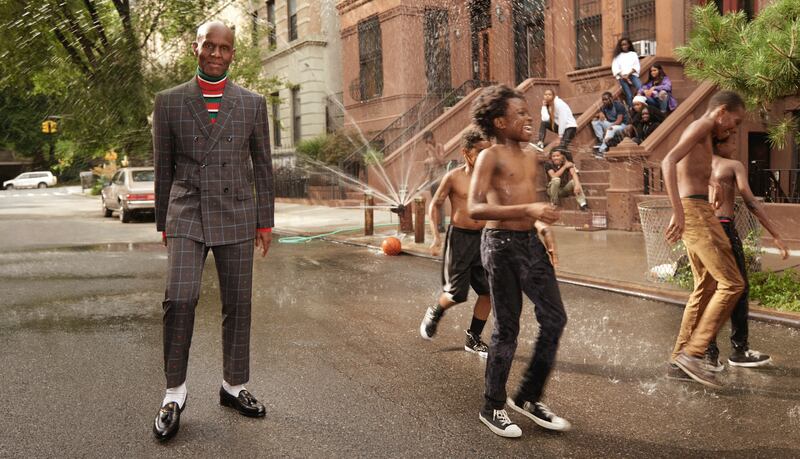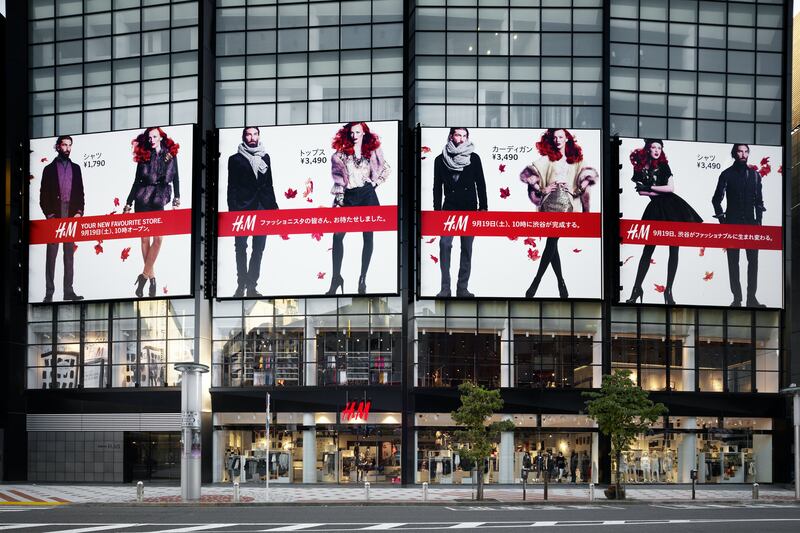
The Business of Fashion
Agenda-setting intelligence, analysis and advice for the global fashion community.

Agenda-setting intelligence, analysis and advice for the global fashion community.
THE CHEAT SHEET
Fast Retailing's Digital Ambitions

Uniqlo store in Osaka, Japan | Source: Shutterstock
The Bottom Line: Uniqlo's ability to quickly incorporate new technologies and retail trends has helped it avoid the inventory problems of H&M or declining sales of Gap.
ADVERTISEMENT
Dapper Dan Tells His Story

Dapper Dan in Gucci's Autumn/Winter 2017 menswear tailoring campaign | Source: Courtesy
In the 1980s, Dapper Dan popularised the idea that knockoff (or, as they became known, knock-up) Fendi and Louis Vuitton logos could be stylish too, setting in motion trends that have come to define both streetwear and luxury fashion. His tailor shop on 125th Street in Harlem closed in 1992, and it took another 25 years before the luxury industry embraced him, when Gucci helped reopen his atelier and collaborate on a collection (though even these gestures came only in the wake of accusations the brand ripped off Day's work). In the interim, luxury embraced streetwear, especially the logos. And the industry has faced increasing pressure to acknowledge its cultural debts, rather than simply appropriating underground art for financial gain. Day's memoir will cover seven decades, from his experience growing up in Harlem in the 1940s and 1950s to his work with hip-hop legends and athletes in the 1980s to his partnership with Gucci.
The Bottom Line: Day's memoir is no mere history lesson. As one of the most influential black voices at Gucci — and therefore the fashion industry as a whole — he has played a pivotal role in guiding the brand's approach toward other cultures and taking it to task when it fails.
Is Fenty Beauty Preparing to Enter Mainland China?

Fenty Beauty | Source: Fenty Beauty
Fenty Beauty managed to surpass €500 million in annual sales without entering the world's second-biggest cosmetics market. That may be about to change. The LVMH-backed, Rihanna-fronted beauty line recently opened an account on the social media app Weibo, a necessary step for any Western brand looking to sell directly to Chinese consumers. Though it has yet to post, the account follows Xiaohongshu, an e-commerce site. But though Fenty took the US and Europe by storm, success in China is by no means assured, BoF's Aijing Wang reports. For starters, Fenty has made a splash with its 40 shades of foundation; diversity doesn't sell as well in China, which is relatively homogenous compared with the US. Regulations mandating animal testing for cosmetics are another roadblock for cruelty-free Fenty, though China appears to be slowly loosening these requirements.
The Bottom Line: Fenty will have plenty of competition in China's red-hot beauty market, where Western brands like Estée Lauder, L'Oréal and Chanel (which added Tmall to its Chinese distribution channels earlier this month) are well-established.
ADVERTISEMENT
COMMENT OF THE WEEK

Source: HM
"The moment you lose sight of what the customer wants you lose big time." @andrewjgrimes2021, commenting on "Inside H&M's $4 Billion Inventory Challenge."
SUNDAY READING
Professional Exclusives You May Have Missed:
The Week Ahead wants to hear from you! Send tips, suggestions, complaints and compliments to brian.baskin@businessoffashion.com.
Was this BoF Professional email forwarded to you? Join BoF Professional to get access to the exclusive insight and analysis that keeps you ahead of the competition. Subscribe to BoF Professional here.
Designer brands including Gucci and Anya Hindmarch have been left millions of pounds out of pocket and some customers will not get refunds after the online fashion site collapsed owing more than £210m last month.
Antitrust enforcers said Tapestry’s acquisition of Capri would raise prices on handbags and accessories in the affordable luxury sector, harming consumers.
As a push to maximise sales of its popular Samba model starts to weigh on its desirability, the German sportswear giant is betting on other retro sneaker styles to tap surging demand for the 1980s ‘Terrace’ look. But fashion cycles come and go, cautions Andrea Felsted.
The rental platform saw its stock soar last week after predicting it would hit a key profitability metric this year. A new marketing push and more robust inventory are the key to unlocking elusive growth, CEO Jenn Hyman tells BoF.